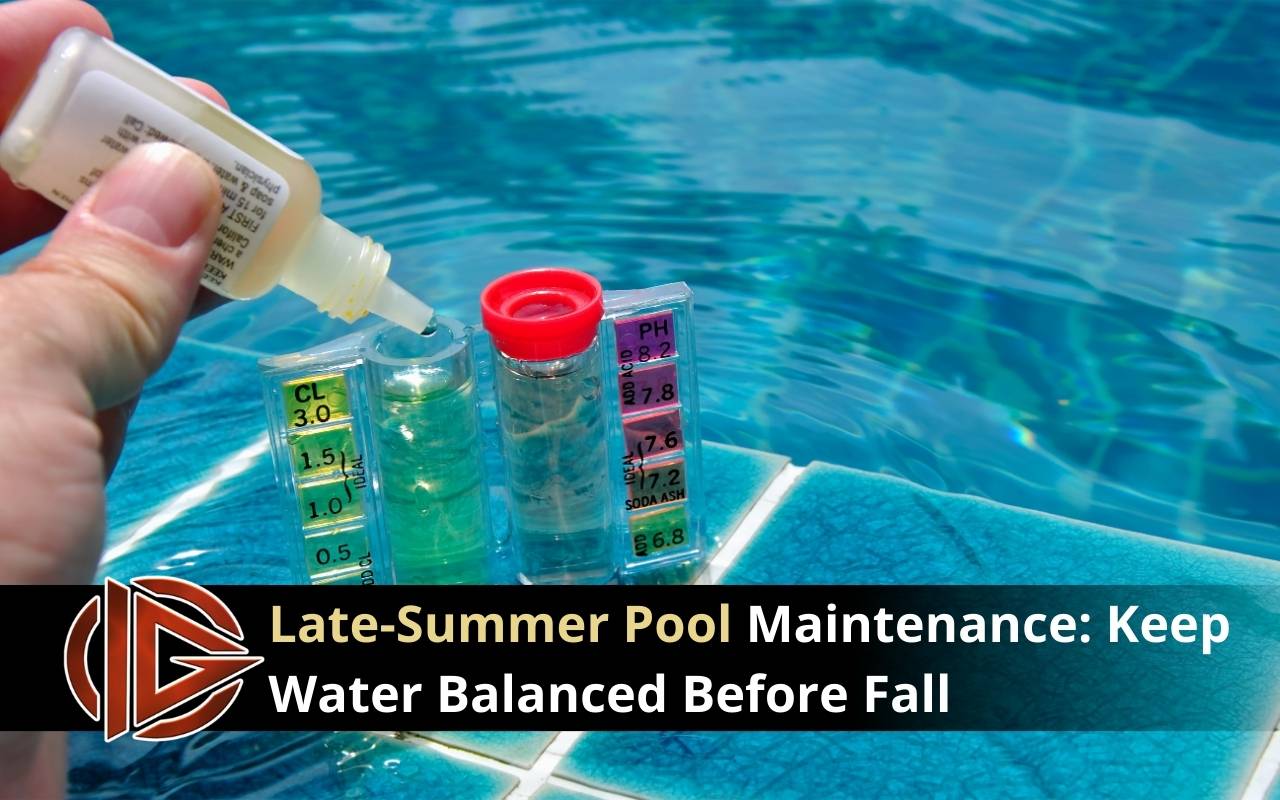
As the sun sets on another Bay Area summer, Walnut Creek pool owners face a seasonal challenge. Late summer pool maintenance is essential for water balance, comfort, and pool longevity. Small issues left unattended now can become major repairs when cooler months arrive. With a few preventive steps, you can protect your investment and enjoy clear water longer.
Importance of Late-Summer Pool Maintenance
The pool maintenance guide homeowners prioritize is more than routine care. Regular cleaning and balanced chemistry safeguard pool surfaces and equipment. By acting now, you prevent algae growth, corrosion, and scaling. Consistent upkeep also ensures your pool is safe and inviting through September. Moreover, water chemistry stabilized now reduces risks during colder weather.
- Protect pool equipment from strain
- Preserve surface finishes from corrosion
- Reduce algae and bacteria growth
Understanding Water Chemistry Changes in Late Summer
Late-summer weather swings cause unique pool challenges. Hot days followed by cooler nights can alter pH levels. High evaporation concentrates minerals and leads to imbalances. Falling leaves add organics that reduce chlorine effectiveness. In Walnut Creek, keeping water balanced requires adjusting for these shifts. With consistent testing, you can maintain clarity and avoid algae blooms.
- Heat raises evaporation and concentrates minerals
- Cooler nights affect sanitizer performance
- Debris increases demand on chlorine
Testing and Balancing pH Levels
Healthy pool water relies on accurate pH control. Target a pH of 7.4 to 7.6 for safe swimming. Late summer brings quick changes, so test at least twice a week. Add pH reducer or increaser when needed, distributing carefully around the pool. This small step ensures swimmer comfort and prevents surface damage. Make pH testing part of your weekly checklist.
Managing Alkalinity and Calcium Hardness
Total alkalinity prevents sharp pH swings, protecting swimmers and equipment. In late summer, evaporation and chlorine demand often raise alkalinity. Adjust levels slowly using safe acids. Calcium hardness also requires attention, as low levels corrode plaster and high levels create scale. Keeping both in range ensures clear water and prevents costly repairs later.
Chlorine Maintenance Before Fall
As pool use slows, sanitizer levels remain vital. Warm water allows algae spores to thrive in Walnut Creek pools. Keep chlorine between 1.0 and 3.0 ppm. Weekly shock treatments prevent chloramine buildup and protect against bacteria. Stabilized chlorine products help resist UV degradation during sunny days. Careful chlorine management now ensures no gaps in sanitation.
- Maintain chlorine levels weekly
- Shock after heavy use or weekly
- Monitor cyanuric acid for balance
Adjusting Filter Run Times for Cooler Weather
Summer requires long filtration cycles, but late summer allows adjustment. Instead of 12 hours, aim for 8–10 daily. Split cycles between morning and evening for even circulation. Monitor pressure gauges and backwash when needed. These steps maintain water clarity while saving energy. Filter adjustments are crucial in how to maintain pool water quality routines.
Implementing a Smart Weekly Maintenance Checklist
A checklist ensures you never overlook vital steps. Track pH, alkalinity, chlorine, and cyanuric acid levels. Skim debris, brush walls, and clean baskets weekly. Note changes and equipment checks to prevent surprises. Logging results helps plan treatments and saves time. This organized approach creates consistent results and healthier water.
Preventing Algae Buildup
Warm late-summer water encourages algae. Prevention is easier than removal. Use weekly algaecide treatments as added protection. Regular brushing disrupts algae before it grows. Direct water flow toward corners to avoid dead spots. Remove organic debris daily. This combination of practices helps keep pools sparkling clear.
Extending the Lifespan of Your Pool Through Proper Maintenance
Long-term benefits of diligent care extend beyond appearance. Balanced chemistry preserves surfaces and prevents heater or pipe damage. Regular debris removal reduces strain on pumps. Quick fixes prevent small issues from becoming expensive. The pool maintenance costs avoided through timely care are significant. Today’s effort ensures smoother openings next spring and greater equipment longevity.
FAQs
Why is late-summer pool maintenance important?
It prevents algae, balances chemistry, and prepares pools for cooler months.
How often should I test my water in late summer?
At least twice a week, due to rapid changes in pH and sanitizer levels.
What is the ideal pH range for late-summer pools?
Keep pH between 7.4 and 7.6 for safe and effective sanitation.
Should I adjust my filter schedule as fall approaches?
Yes, reduce run times to 8–10 hours daily, split into two cycles.
How can I prevent algae in late summer?
Maintain sanitizer levels, brush surfaces, remove debris, and apply weekly algaecide.
Ensuring a Smooth Transition Into Fall
Late-summer pool care sets the stage for a worry-free fall. By testing regularly, adjusting filters, and managing chlorine, you protect your pool. Following these steps ensures lasting clarity and safety. For expert help, contact our team for personalized advice and solutions. A little care now delivers long-term peace of mind for every Walnut Creek homeowner.




